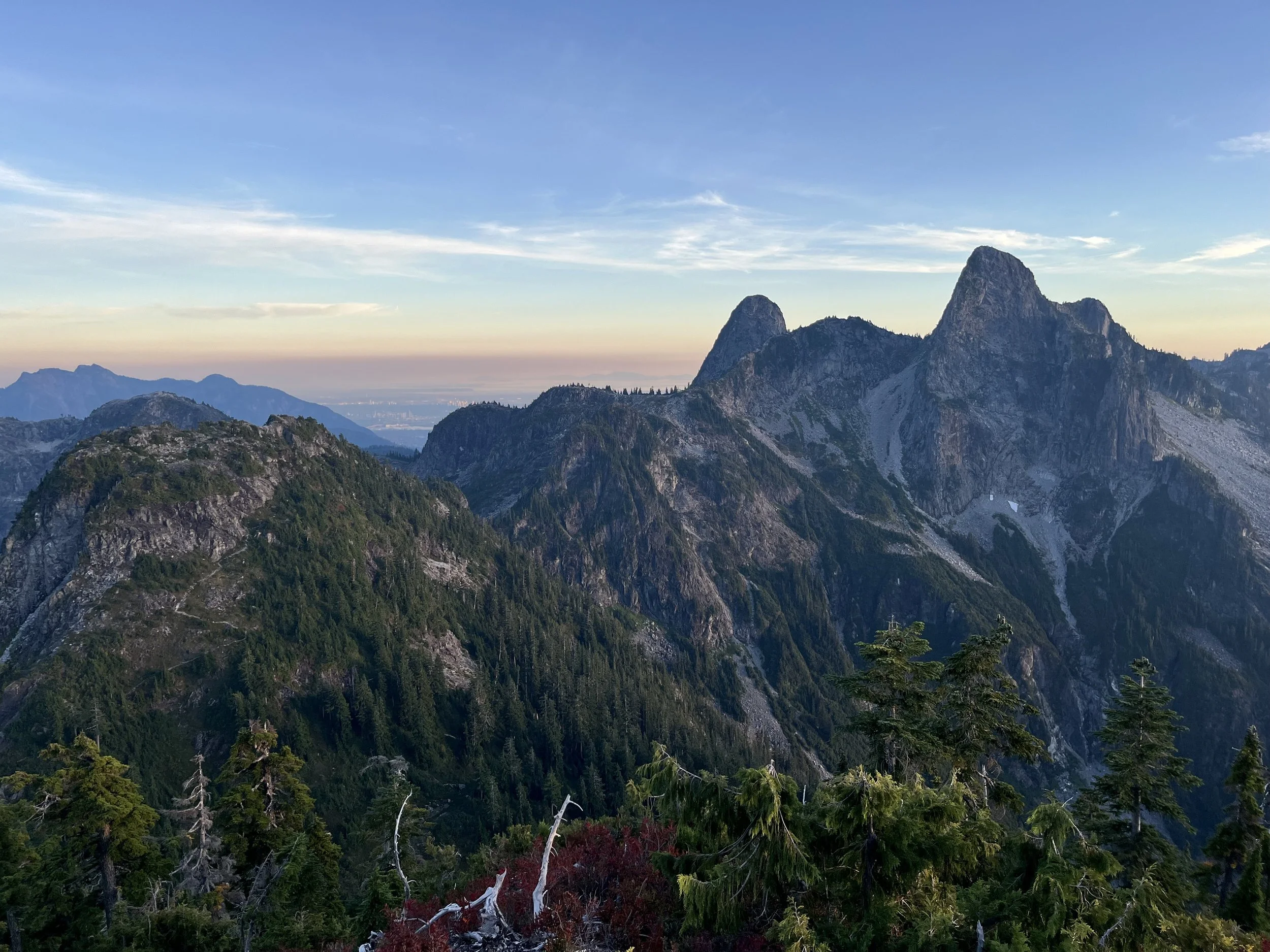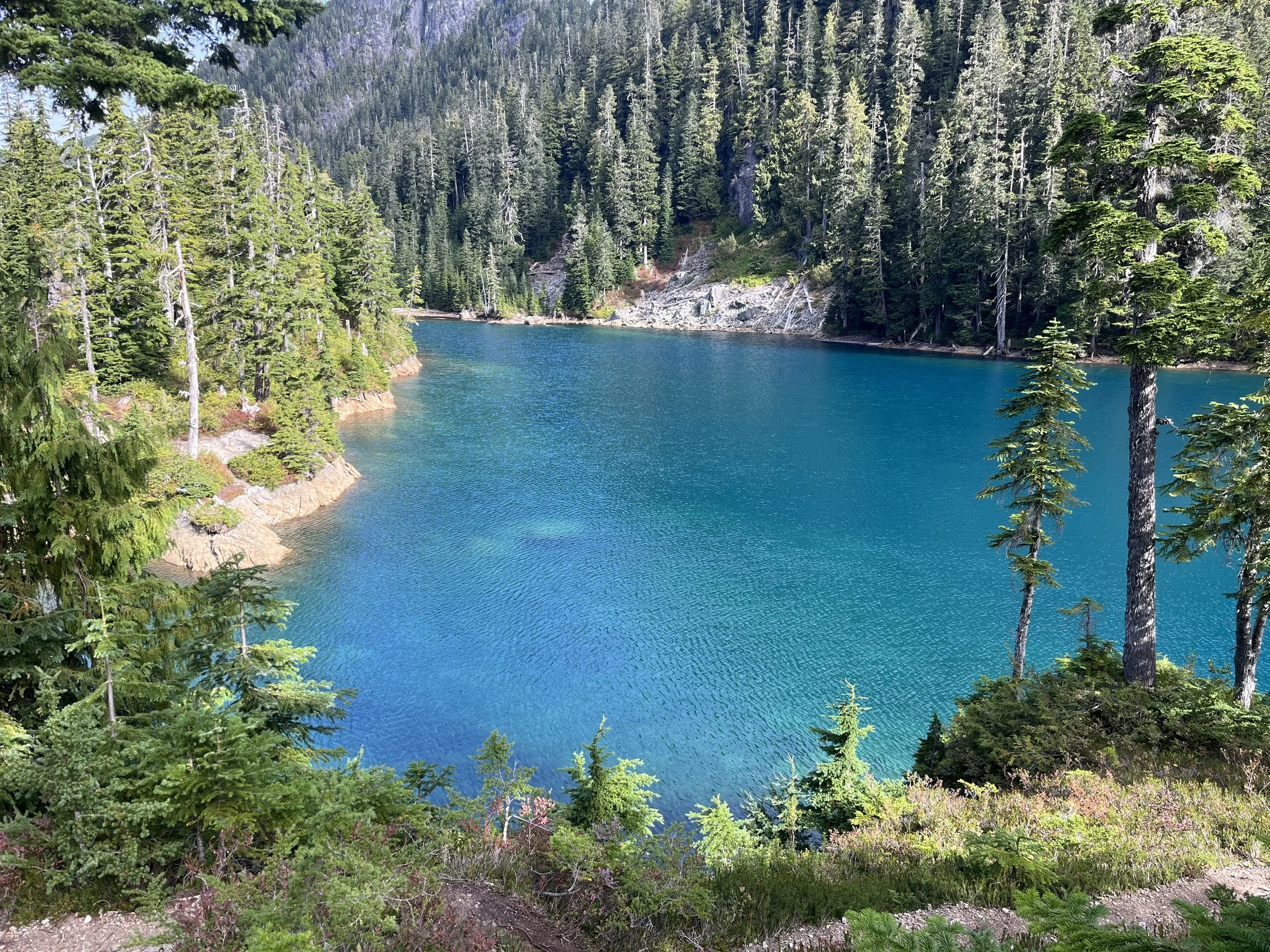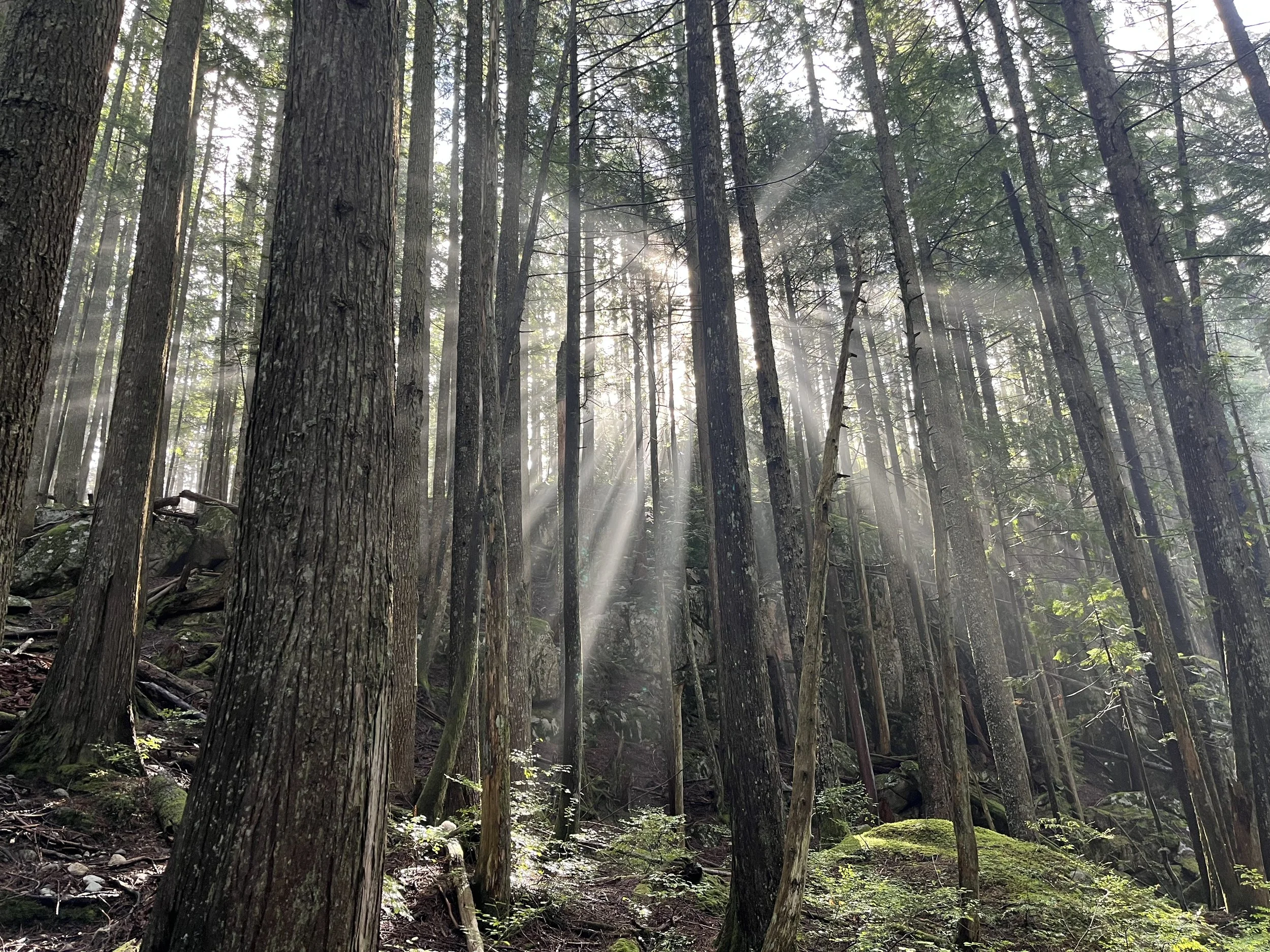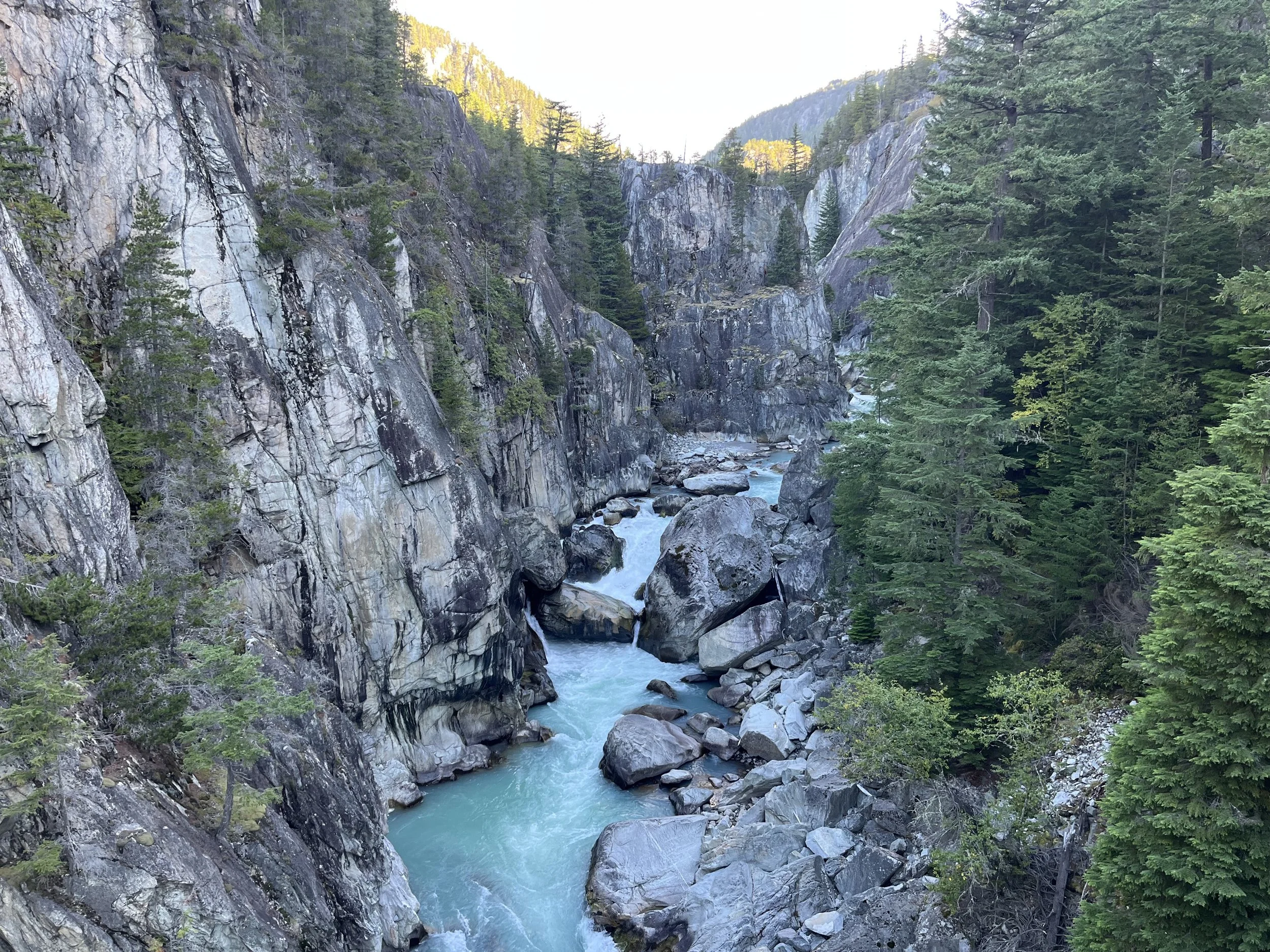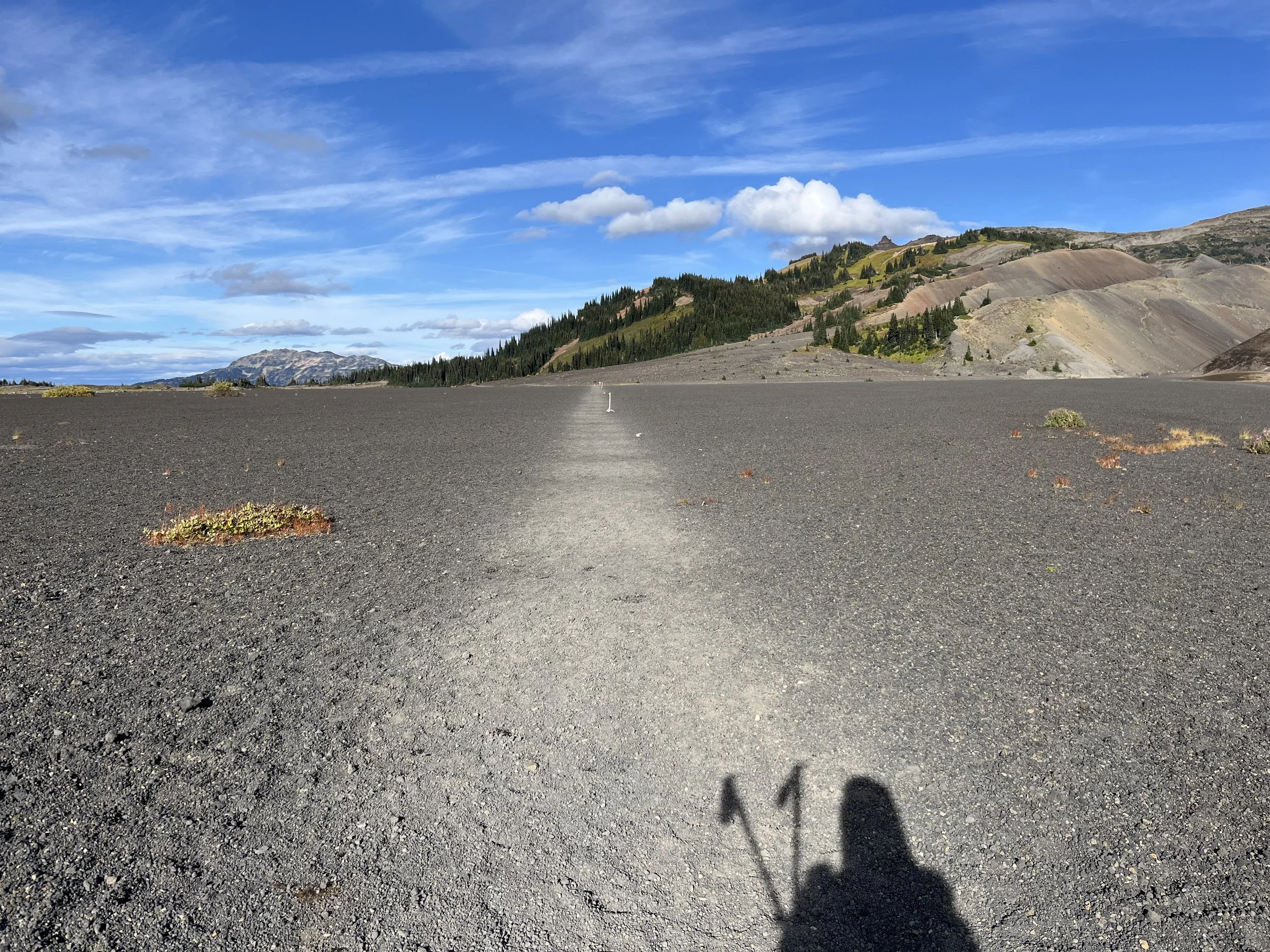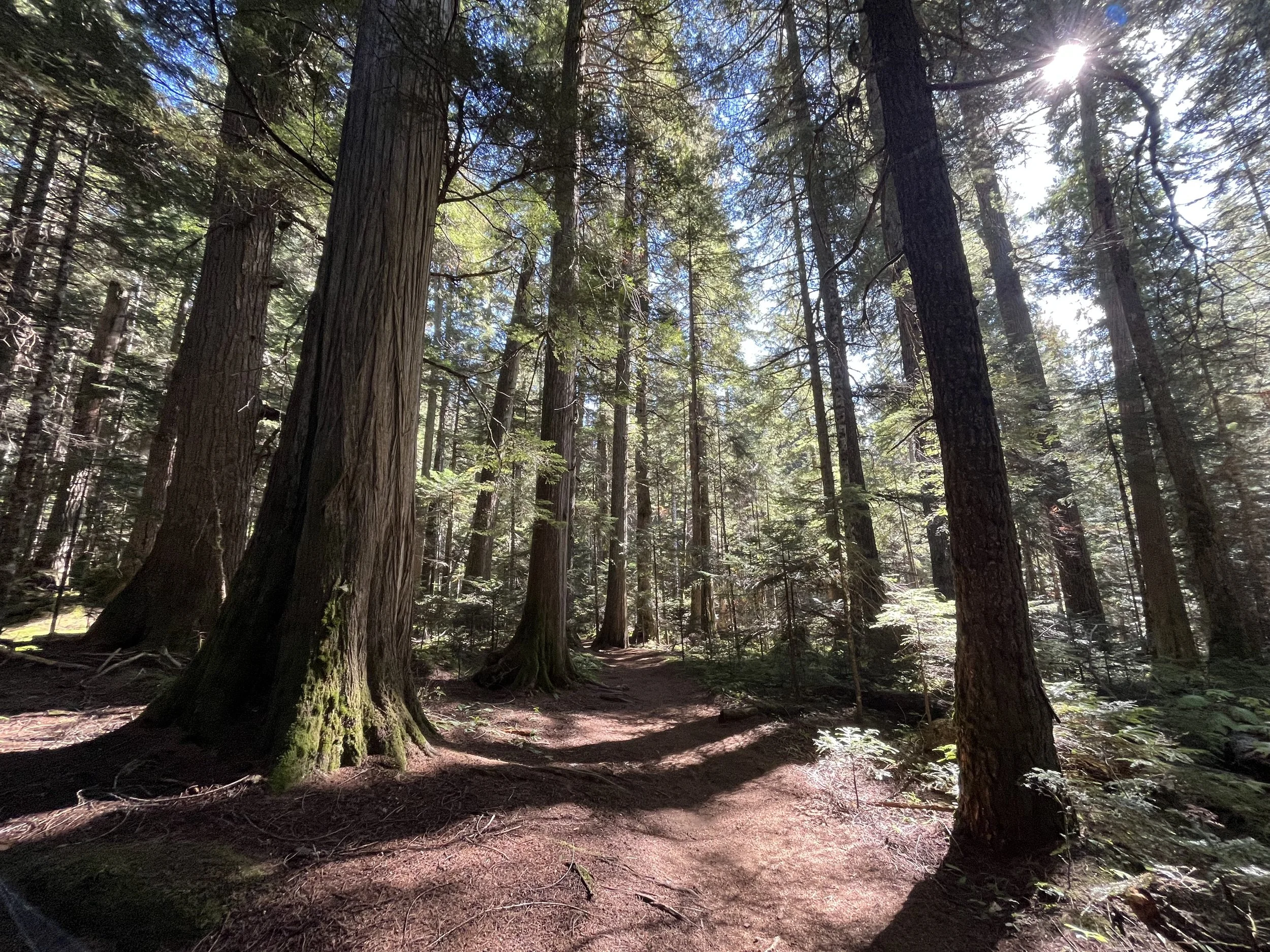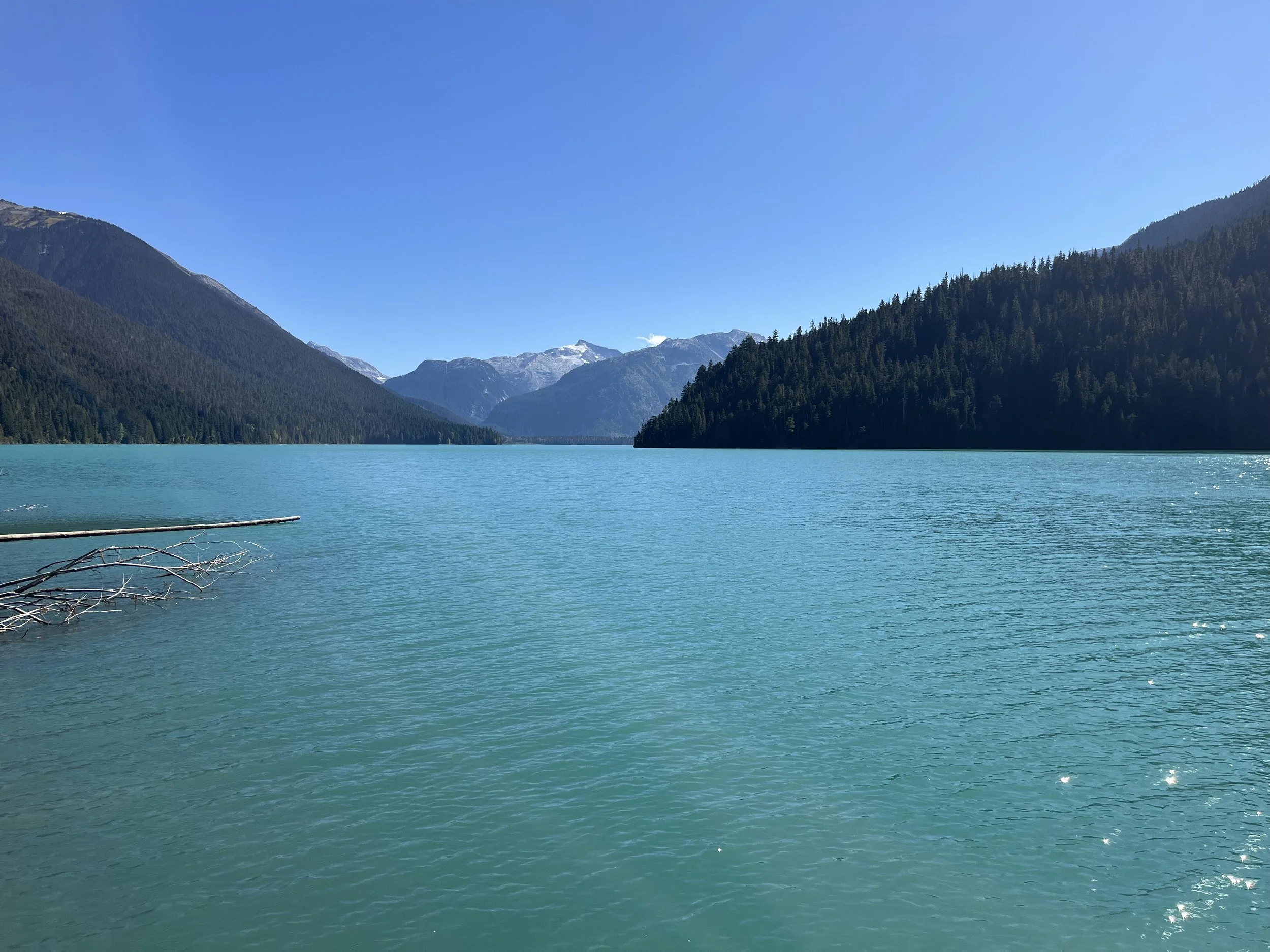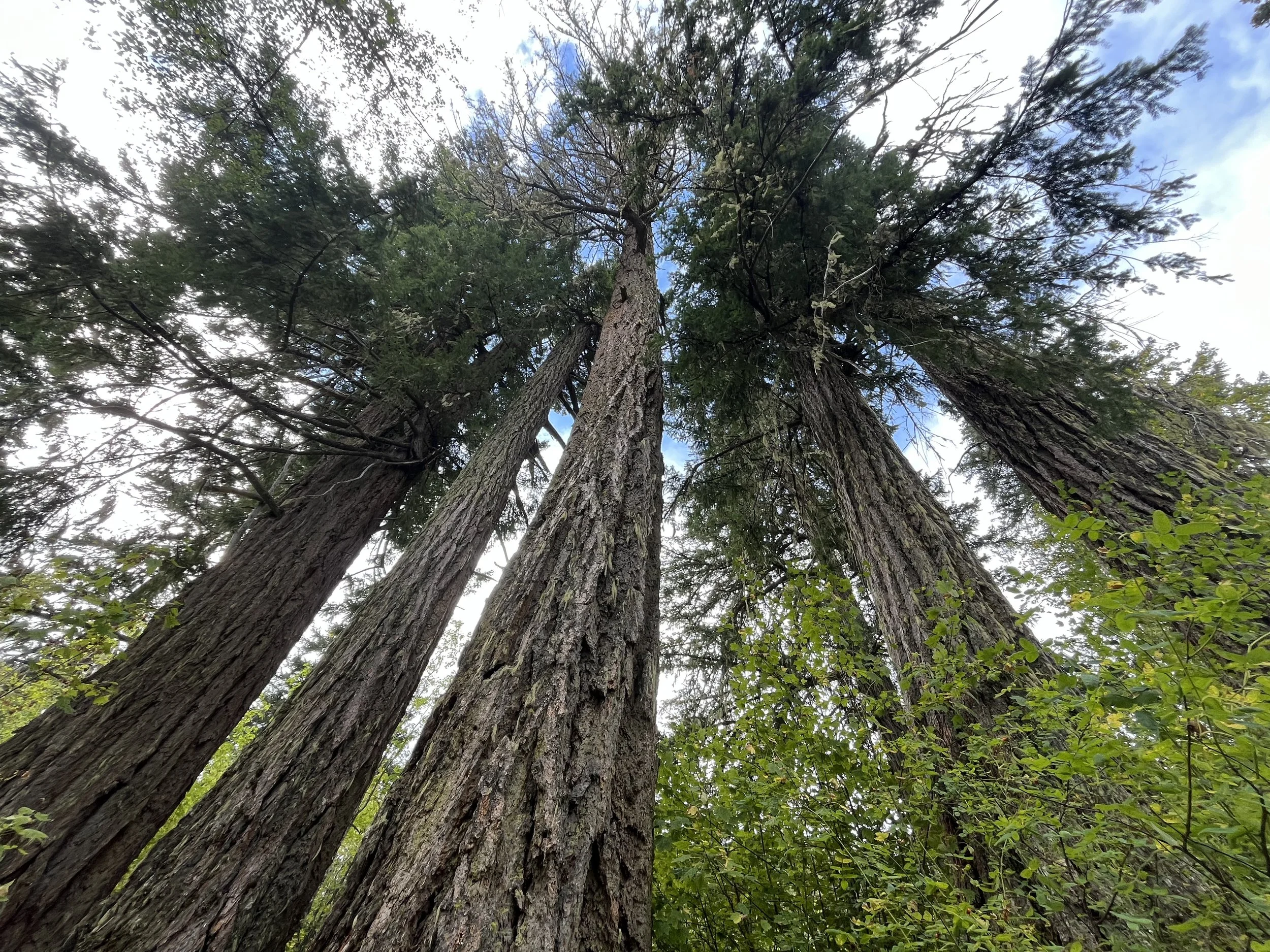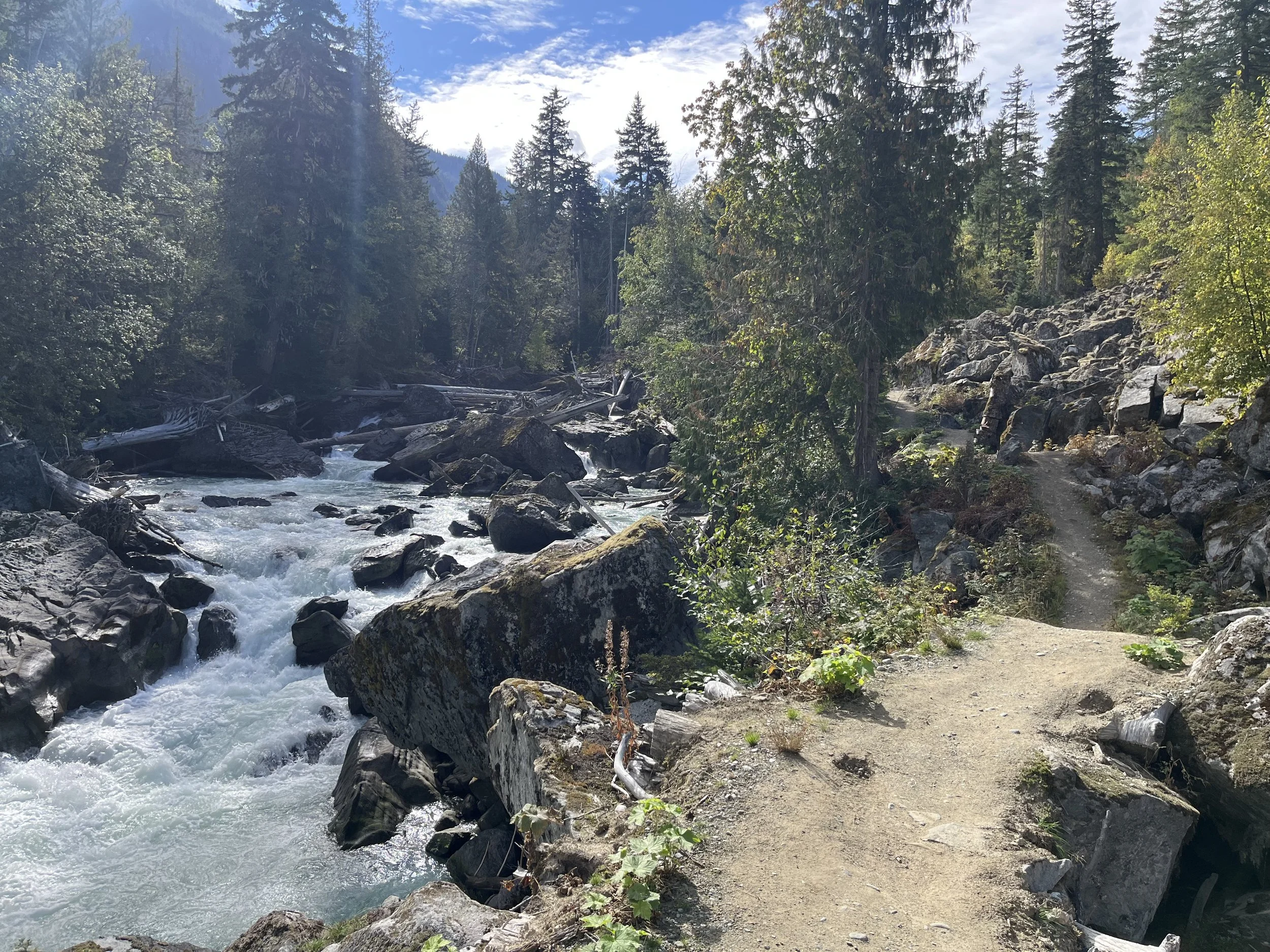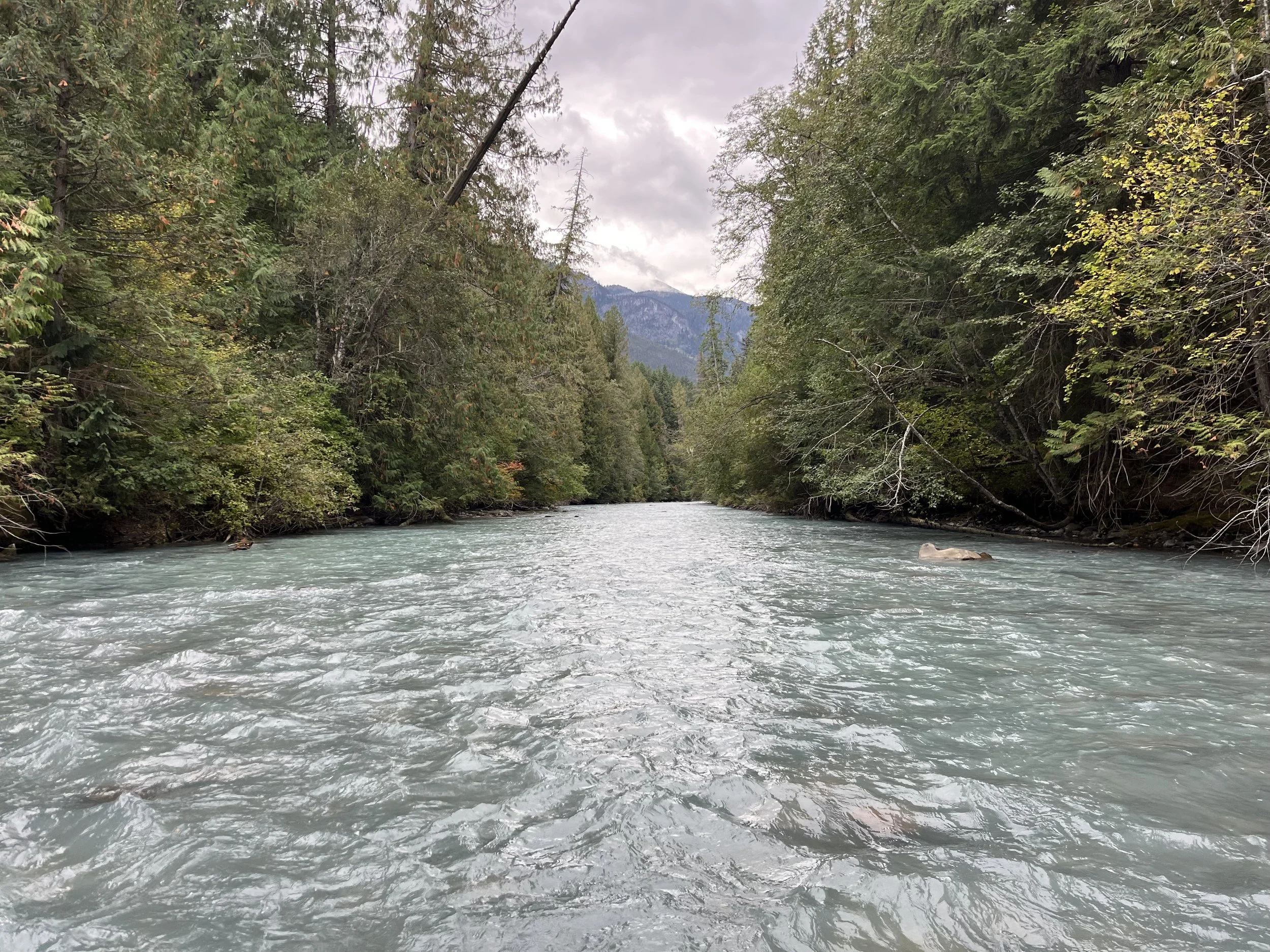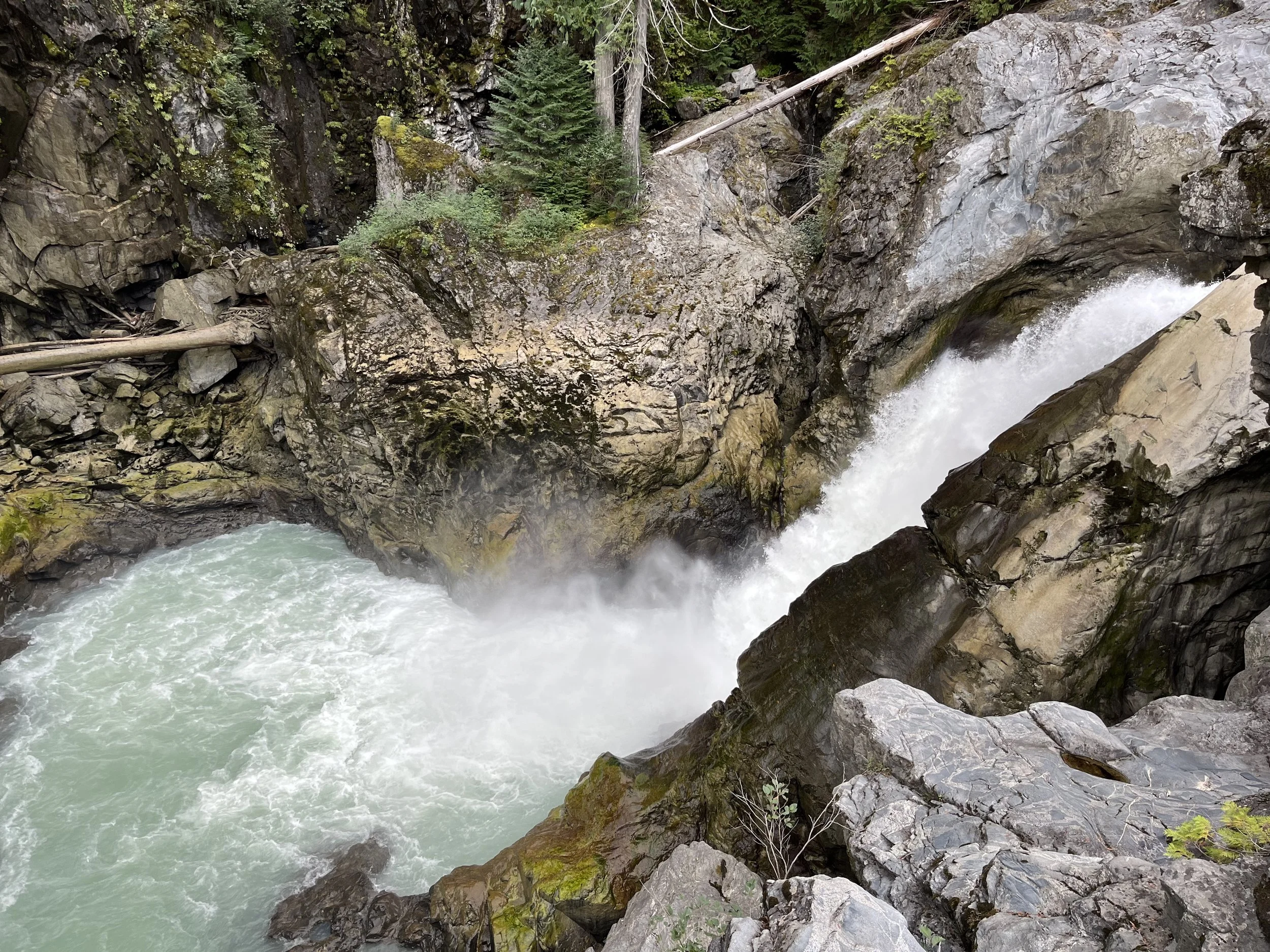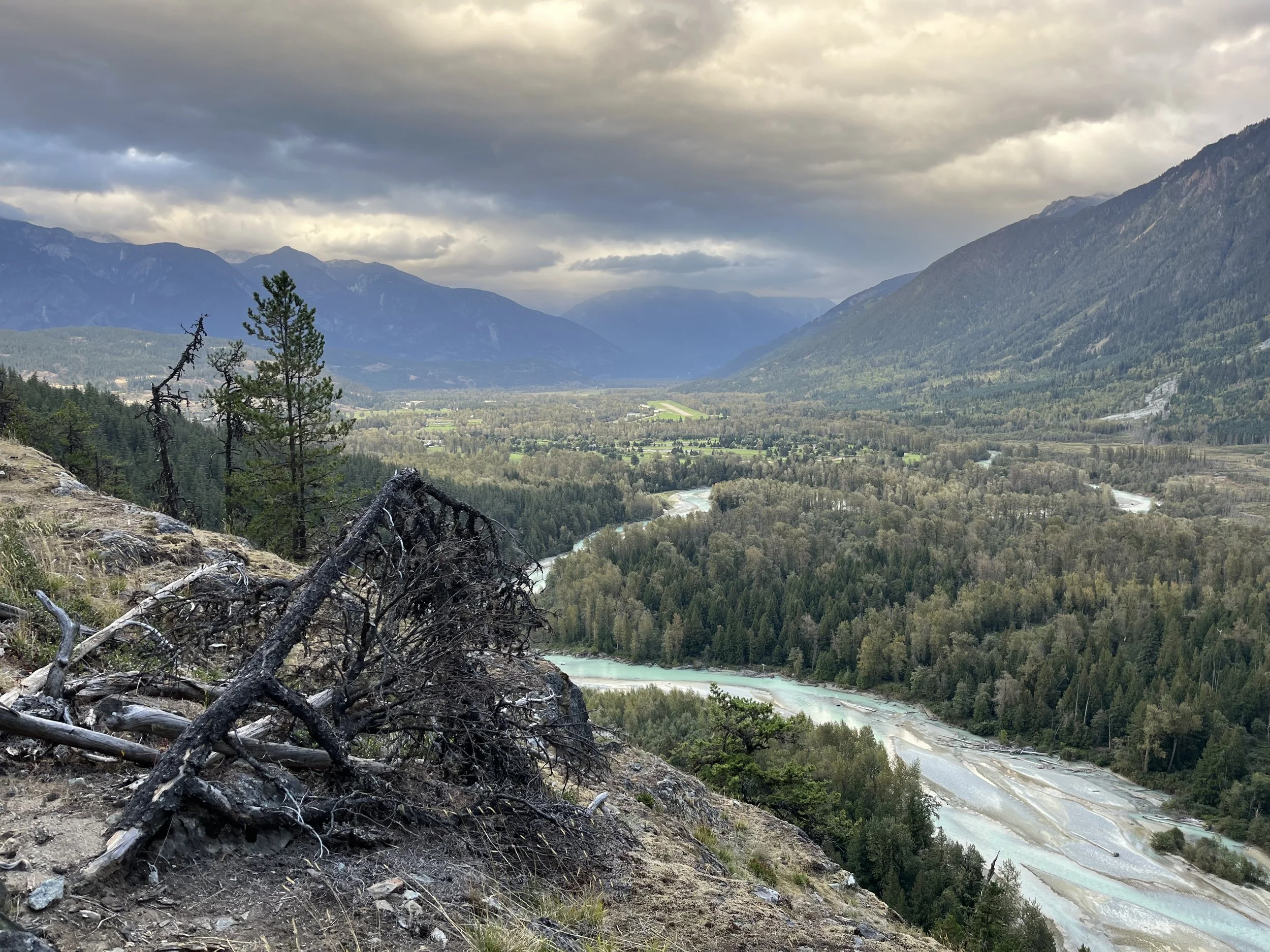
Pacific Ranges Low Route
Hiking from Vancouver to Bella Coola
The Pacific Ranges Low Route
The Pacific Ranges Low Route is an unofficial and unfinished hiking route in progress in British Columbia, Canada. It connects Vancouver to the Central Coast town of Bella Coola via established trails and routes, as well as by venturing out over open terrain. I have hiked much of it, and other parts I have travelled by mountain bike, skis, kayak, horse, snowmobile, car and helicopter. I no longer have access to a helicopter, car, snowmobile, horse, kayak, skis nor even a mountain bike, so the route will be a hiking route (with some packraft alternate routes).
Warning: this is a personal project, not a suggestion for a thru hike. I don’t recommend it unless you have experience scrambling, fording rivers, bushwhacking in the coast mountains (an unpleasant experience), hiking in grizzly bear country, suffering through mosquitoes and black flies, dealing with regular rainfall, avoiding snow, and doing long and heavy food carries with few opportunities for resupply and battery charging.
I’m posting the information here as an unfinished/planned route, and I will slowly update it in the years ahead.
The Route
Vancouver to Pemberton is straight forward - you are funneled northward on established trails. North of Pemberton I have, since the 1980s, hiked many locations that almost make a full complete route to the town of Gold Bridge. North of there I mountain biked and hiked in the south Chilcotin mountains in the 1990s. I figure now I could just keep going north, keeping to the edge of the Chilcotin Plateau next to the coast mountains and then cut over to the coast to the town of Bella Coola after a detour through Tweedsmuir Parks Rainbow Range. I feel that going across the Chilcotin will be much better if a packraft is used, so I’m adding in packrafting alternate routes (versus some long road walks).
But many of my visits were a long time ago and things change. To do a full thru-hike of this route would require some exact information and lots of planning (especially for food resupplies). So in 2025 I hiked from Vancouver north to Pemberton, where a weather forecast of ten days of rain in a row convinced me that I had better places to be. Read my trip report here. In coming years I will hopefully hike the rest of the route. For now I have collected some exact information on the route between Vancouver and Pemberton. Below are a selection of photos. I only have an old phone with a wide angle lens, so keep your expectations low for photo quality.
High Routes and Low Routes
I named it the Pacific Ranges Low Route to distinguish my route from “high route“ options between Vancouver and Bella Coola, as outlined in John Baldwin’s book Coast Mountain High Routes. Those high routes include some climbing and glaciers, and even if you think you can handle mountaineering in the coast mountains (brutal approaches and exits), you couldn’t connect those routes to Bella Coola in a single trip (not without ski plane/helicopter or boat resupply drops of food, boat ferries across inlets, world-class river crossing skills, and John Clarke-level bushwhacking tolerances).
If you get that book, and you should if you like hiking off-trail in British Columbia (link to online seller), you’ll see some overlap of my plans with the book routes in the southwest Chilcotin. I planned my route before the book came out (based on my previous trips there, plus online trip reports and satellite imagery), and I don’t plan on making any changes based on the high routes in that book, but some of them are an option if you are (1) fast and (2) comfortable with some difficult scrambling and climbing. For everybody else who is a trhu-hiker without a support driver who can resupply you, you will never make the next food resupply point if you go off scrambling along every high ridge instead of making good time along an established lower trail. Many of these routes are for people with cars or boats waiting for them, not for thru hikers.
I’m tired of hiking with crampons and an ice axe strapped to my backpack, I want to do a route where I can go lighter and in less dangerous places. So I planned the low route to avoid snow and ice, difficult sketchy scrambles and dangerous river crossings.
Maps
If you are curious about the route, you can see my planning in progress that I occasionally update. Click here for map. Red lines = planned hiking route, Blue lines = planned packrafting, Yellow lines = alternate routes. Some if it is based on other people’s hikes. Some is just based on seeing a possible route over open terrain in satellite imagery.
Dangers, Annoyances and Other Difficulties
This is an unofficial route that attempts to connect established trails and routes.
To be clear, parts of this route are dangerous. At the very beginning the Howe Sound Crest Trail (HSCT) has quite a bit of scrambling, as does the route on the Chief in Squamish. Watch some videos of the HSCT to get an idea of how difficult it is: one, two, three, four, five, six.
You can avoid the HSCT by starting the hike north of Vancouver in the town of Squamish. There is no easier trail option connecting Vancouver to Squamish.
After Pemberton you will be in increasingly isolated areas. Look at the map. There’s nothing out there in most places.
The farther north you go from Pemberton, the more grizzly bears there will be. And there have been a lot recently with a growing population. There have been attacks by both grizzlies and black bears all along this route.
I’ll try to minimize river crossings, but there will be a few that are unavoidable.
There will be some bushwhacking. Sorry, I’ll do my best to keep it to a minimum.
Seasons and when to go
Early summer still has snow up high. It is also bug season. Then mid-summer is boggy wet trails and extreme bug season. Mid to late summer is the worst of the forest fire danger. I prefer a late August to early September start in Vancouver for this route. This will be the optimum time for the least insects, dry trails, dropping temperatures, and lower forest fire danger. But you can go earlier if you have higher tolerance for bugs, wet trails and the chance of a fire chasing you down.
“Fire season“ is sort of every year now. You should definitely check the fire danger levels before you go (for each region, as the firer danger varies heavily between the wet coast and dry interior).
As for “bear season,“ my totally unscientific belief which you should not rely on is that once the salmon start spawning in the fall, the bears will be spending less time grazing in the meadows waiting for me to surprise them, and more time sleeping by the riverside in a salmon-induced coma.
Road walking or packrafting alternates?
Anybody who has ever had any sort of plan to travel in a northward direction in Canada over a long distance soon comes to a realization: due to the geography (lakes, rivers, swamps, isolation from where people live) you will soon run out of trails and be forced to walk on a road or get on the water and start paddling. If you don’t have a packraft and you don’t want to buy and carry one on your back, you will need to do some road walks once you get north of Pemberton. Check out the map.
Volcanoes?
Yes, but dormant. The route goes through the Garibaldi Volcanic Belt, with views of strato volcanoes, such as Mount Garibaldi and the chance to climb up the Black Tusk, and then farther north you pass by the Mount Meagre massif and walk through volcanic areas with interesting geology by Athelney Pass. Farther north the route swings through the Anahim Volcanic Belt with a visit to the Rainbow Range shield volcano.
Photos, videos and trip reports along the route
If you want to see examples of what it’s like on the ground, there are some trip reports and videos. See links below.
Vancouver to Pemberton Valley
North of Pemberton
South Chilcotin Mountains Park
Chicotin Plateau
West Chilcotin
Tweedsmuir Park
Hunlen Falls: drone video and hiking video
Bella Coola
Practical Information
Resupplying and battery charging
Resupplying (food, battery charging) gets difficult after Pemberton if you don’t have someone driving out to deliver food to you. There will need to be some long “food carries.“ Tolerances to heavy carries vary, so this route may not be for you (e.g., you go ultralight and don’t want to get a backpack appropriate for heavier loads). Exact info on resupply points coming eventually. As for mailing resupply packages, there will be some difficulties and certain post offices along the route are only open two to three days per week. If you are American or you got accustomed to the US Postal Service while thru-hiking in the US, you need to know that “general delivery“ exists in Canada, but in a way that makes it unusable for travellers. You need to use Canada Post’s FlexDelivery service. I think all successful uses of American-style general delivery by tourists and travellers are probably just a small town post office knowing what you are trying to do with your package and ignoring the rules in the tourist’s favor.
These are the food resupply and battery charging locations starting in Vancouver and going north: Squamish, Whistler, Pemberton, Gold Bridge, Xeni Gwet’in (Nemaiah Valley), Tatla Lake, Nimpo Lake, Anahim Lake, and Bella Coola. Squamish, Whistler and Pemberton have supermarkets open seven days per week and post offices that are open every day but Sunday. Gold Bridge has a small grocery store open seven days per week and a post office that is only open two days per week. Xeni Gwet’in only has a very small convenience store in a gas station and a post office open three days per week with limited hours. Tatla Lake has a convenience store and options for mail delivery nearby. Nimpo Lake has a small grocery store open seven days per week and a post office open three days per week. Anahim Lake has two small grocery stores and a post office open three days per week. Bella Coola has a grocery store open seven days per week and a post office open five days per week.
The resupply strategy is very easy between Vancouver and Pemberton. You have access to supermarkets, accommodation and places to charge batteries.
Then it gets difficult north of Pemberton. You will need to do a heavy food carry between Pemberton and Gold Bridge (170km). You can break this section into two if you have a packraft - float back down to Pemberton on the Lillooet River for a resupply and then hitchhike (slowly, eventually) back up the valley to where you started floating. Without a packraft you could just hitchhike both directions.
Between Gold Bridge and Tatla Lake you will have some difficulties. It is 300km. You could do a very heavy food carry, or you could try out a range of these options: 1. take a chance on what you will find in the tiny gas station convenience store in Xeni Gwet’in, 2. attempt to time your hike to be at the post office in Xeni Gwet’in (Nemaiah Valley) when it is open on Monday, Tuesday or Thursday, 3. time your hike to be at the Tatlayoko post office on Monday, Tuesday or Thursday, 4. Get in touch with the Chilko River Lodge and see if you can send them a resupply package to pick up here when you stay as a paying guest (offer to pay for the service, as they pick up their mail at the post office in Tatla Lake) - this option is only a suggestion, I have not yet talked to them, 5. Get in touch with the Tatlayoko Field Station nature conservancy, they have a mail box nearby and their chair is a long-distance hiker. Perhaps they may be able to assist in accepting a resupply package (again, just a suggestion - I haven’t spoken with them), 6. Increase your chances of being on time for a resupply package at a post office by sending two packages (one to Tatlayoko, and one to Xeni/Nemaiah) and assume that one will have to be returned after not being picked up (or you get lucky and are in time for both, and do some big meals).
From Tatla Lake to Nimpo Lake is about 200km, and that is doable for anyone with a backpack that can carry heavy loads. I only plan a small resupply in Nimpo Lake as the next resupply is only 25km away in Anahim Lake.
From Anahim Lake it is about 150km to Highway 20. Here, at Burnt Bridge Creek at Tweedsmuir Provincial park you can request the local transit bus extend its trip to pick you up (but not on Sunday). This bus will take you into Bella Coola for a resupply and accommodation (then request again a drop-off at Tweedsmuir Park the next day if you are staying the night). Or try your luck at hitchhiking into and out of Bella Coola.
Hitchhiking to resupply points will not be as reliable here as it is on American thru hiking trails. Here it is comparable to the difficult hitchiking spots in the US (e.g., national parks with tourists who don’t stop for hitchhikers or the larger upscale gentrified towns). The problems are: loggers and miners who would absolutely pick you up in the 1980s will be far less likely to do so now for liability and personality reasons, the cultural phenomenon of luxury trucks and SUVs with spotlessly clean and delicate interiors on backroads have replaced the old dirty banged-up pickup trucks (guess who is more likely to pick up a dirty sweaty hiker), the newer demographics of tourists are less likely to pick you up than back-country tourists in previous decades (for a variety of reasons), new trends in rural crime and drug addiction in British Columbia make picking up a stranger a risky proposition, and the low level of traffic on all roads along this route, and the low level of traffic on roads in this area.
Accommodation Options
Vancouver has plenty of options. For budget travellers there are two hostels downtown (HI Hostel and Samesun Hostel). To be safe, reserve well ahead of time as summer is the high tourist season here and a big event can result in no accommodation being available, or being at extortion prices (example: $300 hotel rooms were $3000 when Taylor Swift was in Vancouver). Note that there are World Cup games in Vancouver in June/July 2026. For other big events that bring in travelers, do some research…
Squamish has several campground options (see waypoints in the GPX file). The Squamish Adventure Inn is a really nice hostel with great facilities. For those on a higher budget, there are many other accommodation options.
Whistler is a huge resort, there are many, many places to stay here. At the budget level, there are two hostels to choose from: HI Hostel and the Whistler Lodge Hostel. The HI Hostel is OK as far as large mega-hostels go; however it is not in Whistler, but rather in an area outside of town that I knew of growing up as the place where you go to buy home improvement and construction supplies. It’s basically where all the non-tourist businesses are. But you can take public buses into the tourist parts of Whistler. Don’t bother with any campground options. They are either too far away or offer primitive sites at the same price as the HI Hostel (which has showers, kitchen wifi, electricity, etc.)
Pemberton is not very good for accommodation considering its size and location. It never has been, and it might never be. Tourists want to stay in Whistler, and it’s too close to Vancouver to be a town with a bunch of roadside motels as you find in the interior of BC. There are two hotels (and a smaller inn). The cheaper hotel used to be owned by a drug trafficking mafia, but don’t worry they did their murders elsewhere - not in the hotel. I did see some reasonably priced AirBnB accommodation online. The two I saw are located conveniently on Snob Hill (newer transplants and real estate agents may refer to this place as the Benchlands). What you can also do is take the public transit bus back to Whistler to stay there for the night and then return back to Pemberton. It’s a quick trip.
Gold Bridge has one hotel and one motel. In Gold Bridge and points farther north in the Chilcotin you may need to worry about a work crew being sent to the area and booking out all of the rooms. It does happen occasionally. Note that there are two more options up the road in Bralorne, and at Tyax Lodge if you have the money.
The Chilcotin Plateau is, until you hit Highway 20, an extremely expensive place catering to wealthy fly-in tourists who book week-long stays at luxury lodges for upwards of $10,000. Basically it’s the Canadian Wyoming. The “mid-range” is for those who don’t have an airplane - but they charge around $500 per night. There is an ongoing purge of tourist/outfitter operations in this area (tourism licenses are being revoked), and some have shut down recently. Notably it is the lower/mid range going out of business, not the wealthiest operators. For now, the best affordable option is Chilko River Lodge, which offers a small lodge, cabins and tent camping.
Next you have the accommodation options along Highway 20. Tatla Lake has a motel and an inn. Nimpo Lake has a range of not-cheap lakeside resorts, with Vagabond RV Park looking like a good affordable option with cabins, tent sites and a range of services.
For Anahim Lake you won’t find accommodation in the little town/rez itself, but you will find affordable places to stay at the lake of the same name nearby. The options here are Eagle’s Nest Resort (rooms and cabins), Escott Bay Resort (cabins and camping) and Anahim Lake Resort (cabins and camping). All options have electrical outlets for battery charging.
Hagensborg has several mid-range guesthouses (see Google Maps), plus two affordable options: Rip Rap Camp (cabins and camping), Bella Coola Valley Campground (cabins and camping) and Bailey Bridge Campsite (cabins and camping). Both places have camp sites with electrical outlets.
Bella Coola has the affordable Valley Inn and the (prices not advertised but definitely more expensive) Cumbrian Inn. There are also luxury options in the Bella Coola area.
Briefs acts of lawlessness
You can comply with every possible government rule and regulation without too much difficulty. However, if you want to do the best route…
Warning: extended anti-railway tirade below.
The Railway Tracks
My route includes some scenic short-cuts that involve a bit of trespassing on American/British-owned corporate private land, from Porteau Cove until Pemberton. This is the (almost entirely) disused CN Rail railway (formerly the BC Rail line). If you want to 100% follow the rules, you will need to walk on Highway 99 in some places. It will not be enjoyable. And walking the highway is more dangerous than walking the railway. I’ll mark the “legal“ route on the final map.
This rail line is used “illegally“ for purposes of access by climbers, mountain bikers, anglers, kayakers, campers, squatters, photographers, graffiti artists, walkers, random tourists, mushroom pickers, hunters, the actual town mayor and 500 people per weekend in one location, native people accessing their traditional lands, etc. Everybody uses it, despite the “no trespassing“ signs. The trails alongside and across the rails are very well used. It’s been 20 years since I’ve heard of anybody being fined for trespassing on the railway, but I haven’t lived locally for a long time so who knows….
This railway is mostly owned by American and British investment funds and the rail company has ceased freight traffic and announced its intention to abandon its lease on this line, from Squamish through Pemberton and onward. So it may eventually be owned by the government of British Columbia or another company. But if you, as a Canadian or a visitor to Canada, have some sort of deep respect for an $11 trillion American investment fund from Pennsylvania that handed $2 billion to Donald Trump, who regularly makes threats to Canada’s territorial sovereignty and economy, then by all means bow down and respect their ownership rights.
If you want to, in Pemberton, avoid using the train bridge out of respect for the railway company, know that they were, through their negligence, responsible for the worst of the flooding in the 1984 Flood. They never compensated anybody or paid a fine, despite making people scramble to save their guns, chickens, snowmobiles and liquor. Don’t get your hopes up for Pemberton based on this video, those old-timey Canadian and European immigrant accents have been replaced by a standardized dialect and those kind of people and their kids (me) were forced out by gentrification.
For now there is still a luxury passenger train in the tourist season that goes on the rail line. It’s called the Rocky Mountaineer. They have plans for a 2026 season, but it seems that this service will end once CN abandons its lease and ceases maintenance. It’s up to you to research whether or not you can expect trains on this line, and when. Also note that the railway lease by CN will still be active from Squamish south to Vancouver.
So it’s a victimless crime unless you are the victim - getting run over by a train because you were listening to music. The decision to go through a tunnel or detour up and around is yours. Think you can out-sprint an unexpected train on a bridge or in a tunnel? Your choice. Hopefully you don’t recreate the train bridge scene from the movie Stand By Me.
Stealth Camping
As for other grievous acts of lawbreaking, you may need to do some brief stealth camping on West Vancouver city-owned forest land (far from homes, well into the forest) if you don’t perfectly time the section between downtown Vancouver and the start of the Howe Sound Crest Trail. After this, legal camping (wild, backcountry) is easy and plentiful.
Watershed Restrictions
And for a final act of extra serious crimes against society, you will probably need to hop off the trail at one location to take drinking water from a pond that is in a restricted (no recreation) watershed zone. I don’t want to identify anybody, but one person in a position of authority told me that if they saw a hiker getting water here they could not care less. They just don’t want them camping or defecating here or taking their dog swimming. Details coming in full trail guide.
All other rules…
Aside from the above it is easy to follow the rules, including in the provincial parks you pass through.
This rule-breaking means you cannot post this route on any Reddit hiking subreddit or other forums like Club Tread, as it violates the forum rules.
As for residential, farm and ranch private property, I used the government’s ParcelMap tool to avoid that.


